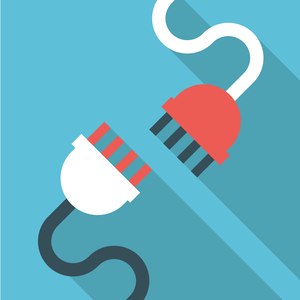IELTS Process Chart (Complete Task 1 Guide)
Being unprepared for an IELTS process chart is a risk as they appear in 1 out of 8 Academic Writing tests.
By completing this lesson, you will be more confident that you’re ready for any question in your IELTS test.
You will learn 5 steps, a unique overview formula and study 4 sample answers to reinforce your understanding of how to answer process chart Task 1 questions.

Contents;
- 5 Steps for IELTS Process Charts
- IELTS Process Chart: Question #1
- IELTS Process Chart: Question #2
- IELTS Process Chart: Question #3
- IELTS Process Chart: Question #4
5 Steps for IELTS Process Charts
Step 1: Analyse the Question
IELTS process charts are easy to analyse, but there are 2 things to keep in mind;
Don’t Rush
Give yourself enough time to understand what’s happening and how all the stages of the process fit together.

Look Everywhere
IELTS process charts often have pieces of information in random places.
Your answer must include everything about the process, so be careful not to miss anything.
Step 2: Write the Paraphrase
To write the paraphrase, repeat whatever the statement from the question in your own words.
I have three pieces of advice for paraphrasing a question.
Don’t Waste Time
This is the least important sentence in your answer, so just write it and move on.
Don’t Get Stressed About Synonyms
Use as many of your own words as possible, but it’s not a big problem if you repeat some words from the question.

Don’t Focus on Individual Words
Many IELTS candidates paraphrase one word at a time, but this method makes it slow and more difficult.
Instead, break the sentence into chunks and paraphrase each piece, one at a time.
For example, I’ve divided the question statement below into three chunks, and I’ll rewrite each one in my own words.

This is my paraphrase;
The image outlines the way that crude oil and petrol are transported to a local petrol station.
Step 3: Write the Overview
The paraphrase and the overview together are the first paragraph of your answer.
An overview is a general description of the IELTS process chart that doesn’t mention any specific details.
It’s important to note that the overview is the most important part of your answers because an effective overview is essential for a high Task Achievement score.

Unique Overview Formula for IELTS Process Charts
Overview = (First & Last Steps) + (Number of Stages) + (Methods, Tools or Influences)
Follow this formula, and you’ll always know what to put in your overview.
For example;
Overall, from first looking at the Academic Task 1 question to finishing the answer, there are four main steps in the answer-writing process which are all done manually using a pen and paper.
Let’s look at these in more detail.
First & Last Steps
This is the part of the example overview above that says; ‘from first looking at the Academic Task 1 question to finishing the answer,‘
You can copy the names of the steps from the question or use different vocabulary if possible.

Sometimes, the stages in the process are not numbered, so you will need to decide where the process starts and ends.
For example, in the image below, you could say that the process begins with the adult fish or that the process begins with the eggs. Either one is acceptable.

Number of Stages
This is the part of the example overview above that says; ‘there are four main steps in the answer-writing process‘
On occasion, it won’t be 100% clear how many stages there are, so you will need to decide.
The IELTS examiner will understand if the process chart Task 1 question wasn’t clear, so whatever you decide will be accepted.
For example, in the process below, to say that there are any number between 7 and 9 stages would be acceptable.

Methods, Tools or Influences
This is the part of the example overview above that says, ‘which are all done manually using a pen and paper.’
What you include will vary depending on whether the process is man-made or natural.
Man-Made Processes
If the process is man-made, you can describe if the stages are done manually or by machinery.
For example, in the process below, you can say that many of the stages are automated, and some need to be done manually.

Natural Processes
If the process shown is a natural one, you can describe external influences such as the factories, plants and animals involved in the process below.

Step 4: Write the Details Paragraphs
We refer to the next two paragraphs as the details paragraphs because this is where you describe the specific details of the IELTS process chart.
Discuss roughly half of the stages in the first details paragraph and the rest in the second details paragraph.
For example, the process below has 9 stages, so you will need to decide if your first details paragraph will describe the first 4 or the first 5 stages.

Vocabulary for Details Paragraphs
All parts of the process chart Task 1 question will be labelled, so you don’t need to know about the process before your IELTS test.
However, you must have a range of sequence words.
The following text contains the type of sequence words you can use.
First of all, the question needs to be analysed in detail, and after that, the paraphrase and overview are written. Then the first details paragraph is written before the second details paragraph. Following that, the finished answer is proofread, and from this, mistakes are found and fixed. Later, when the examiner is marking the essay, there will be fewer vocabulary and grammar errors. Next, the examiner will award a high score, and subsequently, you will have a very good reason to celebrate.
Grammar for Details Paragraphs
Because you need to describe the process, not the people doing the process, you will need a firm grasp of how and when to use passive voice.
Besides that, present simple is the predominant grammar tense in a process chart Task 1 answer because this is the tense used to describe facts.
Step 5: Proofread Your Answer
This is a vital step to help improve your Task 1 score.
Every vocabulary and grammar mistake you find and fix will contribute to a higher band score.
Before your IELTS test, you should know what grammar mistakes you typically make so that you can focus on fixing as many of those as possible.

You can also use this as an opportunity to increase the range of your vocabulary.
For example, if you’ve used the word ‘then’ several times, you can replace it with other sequence words.
IELTS Process Chart: Question #1

IELTS Process Chart: Sample Answer #1
The image illustrates a flower’s lifecycle and the several phases that it undergoes during this process. Overall, from a seed growing into a plant that is capable of producing its own seeds, there are eight main stages, and only one of these requires external influences.
At the beginning of the cycle, the flower starts as a seed, and in the next phase, the seed is planted and watered. From here, the seed germinates, and roots begin to appear on its underside. In the next stage of the development of the flower, it grows leaves and is known as a sprout.
After one week as a sprout, it becomes a seedling with more leaves that are bigger than the ones it previously had. During phase six, it becomes a plant with buds, which, after a week, grow into flowers. The final stage sees the flower become a plant with fruits, and subsequently, the cycle returns to its initial stage with the production of seeds.
Comments on Sample Answer #1
Include Everything
The parts of this question that say ‘1 week’ and ‘3 days’ are easily forgotten as they’re not part of the main text.
Make sure to look out for pieces of information like this and include them all in your answer.

Overview Language
In the overview, we can’t include specific information or descriptions.
This is why I described the person planting the seed as an external influence.
Cyclical Processes
Some processes are linear, where there is a definitive start and end.
Other processes are cyclical, which means that the final stage leads back to the first.
The process we just looked at is cyclical, which is why the last sentence in the sample answer makes it clear that stage 8 continues to stage 1.
IELTS Process Chart: Question #2

IELTS Process Chart: Sample Answer #2
The image illustrates the several phases involved in the water cycle. Overall, from precipitation to the reformation of dark clouds, the process that water goes through has ten main phases, is entirely natural and involves mountains, rivers and trees.
The first stage in the process is when the water falls from dark clouds in the form of precipitation. Some of this water lands on mountains where it flows downwards into rivers that flow through the land below. Other water from the dark clouds falls directly onto the ground, where it infiltrates the existing groundwater, which flows below.
There are two ways in which the water ascends back into the air above; the first of which is evaporation, where the water comes directly from the rivers. The second route is through plants that have taken up groundwater and released it into the air through the process of transpiration. Once in the air, the water condenses into white clouds, which then transport the water to the dark clouds, and the cycle repeats itself.
Comments on Sample Answer #2
Where’s the Beginning?
In this question, the stages aren’t numbered.
This means that we must decide which are the first to last stages.
I decided to start with precipitation, but you can choose a different stage if you feel it’s more logical.

Logical Organisation
In the first details paragraph, I started with precipitation because, in the overview, that’s what I said the first stage was.
Then I decided to split up the information by describing the stages where the water that moves downwards in the first details paragraph and everything else in the second.
Don’t Include Your Own Knowledge.
If you have extra knowledge about the process in the question, don’t include it in your answer.
For example, we know that the heat from the sun is involved in the water cycle process.

However, that information isn’t in the IELTS process chart, so we don’t include it in our answer.
Ambiguous Information
Sometimes information in the image won’t be completely clear.
For example, the stage labelled ‘transport’ in the question above could be interpreted several ways.
In the sample answer, I said that the white clouds transport the water to the dark clouds.
This is not what happens in the real world, but it does reflect what’s shown in the image, which means that my description is acceptable.
IELTS Process Chart: Question #3

IELTS Process Chart: Sample Answer #3
The image outlines the several phases necessary for the production of coffee products. Overall, from the plant which they grow on to becoming commercial products, the coffee-production process includes eight main steps, some of which require manual labour and others involving different types of machinery.
The first step occurs one time every year, and this is where the coffee beans are harvested from the plant by hand. After that, they are added to a machine that processes the beans before they are left under the sun, where they dry for between 24 and 72 hours. Subsequently, they are placed into another machine which is used to hull the dried coffee beans.
In the next stage, the beans are roasted for 10 to 20 minutes in a hand-operated oven. An automated apparatus then packages the roasted coffee beans into paper or plastic bags. The packaged coffee is then loaded into a truck for delivery, and, in the final phase, various coffee products are purchased.
Comments on Sample Answer #3
Overview Vocabulary
Sometimes it’s possible to avoid using the words from the question in the overview.
For example, instead of writing ‘to the purchase of coffee products‘, I wrote ‘to becoming commercial products‘.

However, I’ll only do this when I’m 100% confident that the language is accurate and my description is clear.
Being More Descriptive
We must adapt the amount of detail we include so that our answers aren’t too long or too short.
While writing the final paragraph, I realised that it would be too short, so I adapted my writing to be more descriptive.
If I hadn’t done that, this is what the paragraph would have looked like;
In the next stage, they are roasted for 10 to 20 minutes before they are packed into paper or plastic bags. These bags are then delivered, and, in the final phase, the coffee is purchased.
IELTS Process Chart: Question #4

IELTS Process Chart: Sample Answer #4
The image outlines the several phases required to publish a book. Overall, from the point of writing a book until it is sold in bookshops, the book-publishing process includes nine main steps, some of which are carried out manually and others that require the aid of machinery.
The entire process takes approximately 18 to 24 months to complete, and the first step is where a book is written by an author using a typewriter. After this, the book is sent to a publishing house where the author’s work is studied by editors before a contract is made between the publishing house and the author.
Once the contract is signed, the task of designing the layout begins and continues until a final decision and the best layout is made. In the next phase, a printer is used to produce the book’s pages that are then bound together in the eighth step of the process. The final stage in the process is where the books are distributed to bookshops.
Comments on Sample Answer #4
Analysing the Question
This question also has information that can be easily forgotten.
Where it says ‘Approx. 18-24 months’ could be easily excluded from the answer, but without that information, the Task Achievement score would suffer.
Linear, not Cyclical
Even though the stages in this chart are arranged in a circle, it is not a cyclical process.
This is because there is no arrow pointing from stage 9 to stage 1, and that’s how we know it’s a linear process.

If my answer suggested that it was cyclical, that would reduce my Task Achievement score.
What now?
The next thing to do is practise answering IELTS process chart questions.
You won’t find a lot of these online, so you can sign up for my newsletter for more of these.
Besides process questions, in Academic Writing Task 1, you can also get a map question, but you’re far more likely to get a graph question.
You can also review this lesson on process questions with the video below.
Finally, make sure that you’re fully prepared for whatever you get with my complete set of Academic IELTS Writing Task 1 Lessons.
